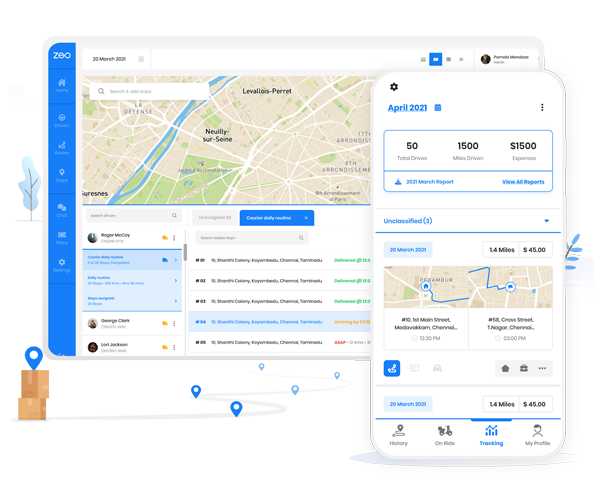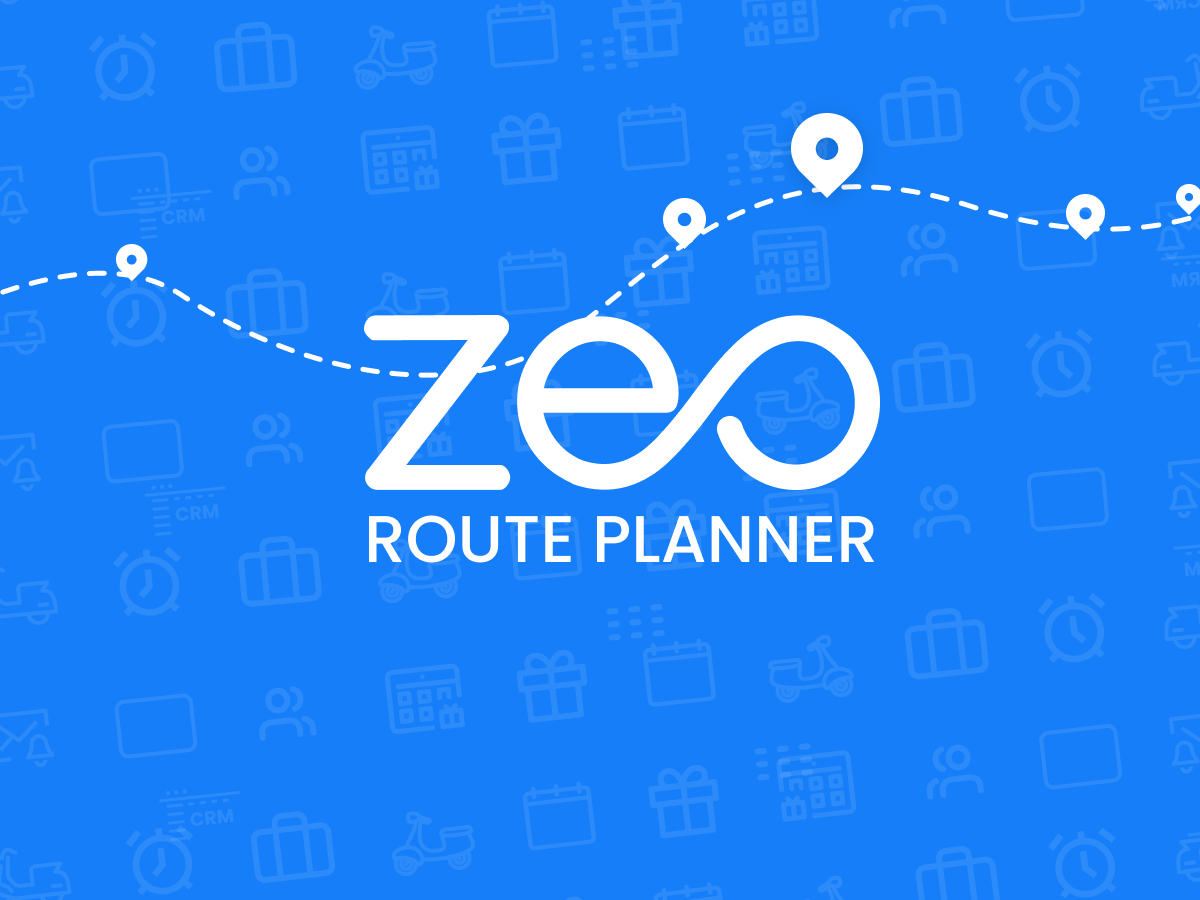Updated on: October 7, 2025
Well begun is half done! Nothing can sum up the importance of last-mile carrier tracking better than this.
While last-mile delivery is the final stage of every delivery process, it also proves to be the most crucial one.
Businesses can plan and execute distribution and warehouse storage well, but a poor last-mile delivery process can derail their operations.
The smart fleet managers are leveraging last-mile carrier tracking to ensure accuracy, reliability, and efficiency. Moreover, they are combining it with route optimization to take the efficiency a notch higher.
What is Last-Mile Carrier Tracking?
Last-mile carrier tracking is the process of monitoring deliveries in the final stage. It covers the journey from a distribution hub to the customer’s doorstep. This phase is the most complex and crucial part of logistics operations.
Unlike generic tracking tools, last-mile carrier tracking provides real-time updates at every step. Businesses know where each driver is, what deliveries are pending, and how schedules are progressing. This reduces blind spots and improves control over the entire delivery chain.
Challenges in Last-Mile Carrier Tracking
While last-mile carrier tracking improves visibility, it also brings several unique challenges for businesses. Addressing these issues is crucial for ensuring reliable service and sustainable growth.
- Limited Real-Time Visibility
Many companies still lack accurate last-mile carrier tracking systems. Without live route tracking and real-time insights, managers cannot monitor progress effectively. This creates uncertainty, reduces accountability, and leads to missed opportunities for improvement. - Rising Operational Costs
The last mile is the most crucial stage of logistics. Fuel, labor, and delays push costs higher. Without smart tracking and route optimization, businesses struggle to control expenses and protect profit margins. - Complex Delivery Networks
Handling multiple drivers, routes, and clients makes last-mile carrier tracking complex. Without proper systems, errors increase. Packages may be delayed, misplaced, or delivered to wrong locations, damaging customer confidence. - Inconsistent Customer Communication
Customers expect precise delivery updates. When last-mile carrier tracking fails, notifications become inconsistent. Missed or vague updates frustrate customers and weaken trust in the company’s reliability.
Benefits of Last-Mile Carrier Tracking
Adopting last-mile carrier tracking transforms how businesses operate. It creates better visibility, cuts costs, and builds stronger customer loyalty.
- Improved Visibility and Control
With last-mile carrier tracking, managers see exactly where shipments are in real time. This level of transparency makes it easier to predict delays and respond faster.Visibility across the network reduces uncertainty and improves coordination between drivers and operations teams. Greater control ultimately drives smoother workflows and stronger customer confidence.
- Higher Customer Satisfaction
Customers today demand accurate and timely delivery updates on their shipments. Last-mile carrier tracking allows businesses to share precise locations and delivery timeframes.This reliability reduces frustration when waiting for orders and strengthens the trust customers feel. Better communication leads to repeat business and a stronger brand reputation.
- Lower Operational Costs
Operating without accurate tracking leads to wasted miles and higher fuel expenses. By combining last-mile carrier tracking with route optimization, businesses reduce unnecessary driving.Lower fuel use directly cuts costs and extends vehicle lifespan. This creates sustainable operations that benefit both profitability and efficiency.
- Enhanced Driver Productivity
Drivers lose time when they are unclear about schedules or locations. With last-mile carrier tracking, they follow optimized routes and receive clear instructions.Less confusion means fewer mistakes and smoother trips. Drivers become more efficient, allowing businesses to serve more customers every day.
- Competitive Advantage
Markets are crowded, and customers quickly switch to providers offering better service. Last-mile carrier tracking ensures reliability, punctuality, and clear communication.These factors create a service standard that stands out from competitors. Businesses gain loyalty, referrals, and a stronger market presence over time.
How Route Optimization Supports Last-Mile Carrier Tracking
Route optimization plays a central role in last-mile carrier tracking. It ensures shipments move faster, costs are reduced, and delivery promises are met. Without effective optimization, businesses struggle to balance efficiency, visibility, and customer satisfaction.
This is where Zeo becomes a trusted partner. Zeo combines route optimization with advanced tracking features that improve every stage of the last mile.
Its tools simplify operations, empower drivers, and strengthen customer relationships. With the growth-centric features of Zeo, businesses achieve efficiency, accuracy, and scalability in last-mile carrier tracking.
- Live Route Tracking
increase fuel savings
Hassle Free Deliveries & Pickups!
Optimize routes with our algorithm, reducing travel time and costs efficiently.
Get Started for FreeZeo provides real-time route tracking for every shipment. Managers gain visibility into driver movements instantly.
This reduces uncertainty, prevents miscommunication, and enables faster responses to issues. Customers benefit from timely updates, which increases trust and satisfaction. - Route Optimization
Zeo’s route optimization engine builds the most efficient paths for drivers. It reduces travel time and eliminates wasted distance. It considers various factors like number of stops, delivery priority, vehicle capacity, driver availability, and more to offer the most efficienct route.
This lowers fuel consumption and operating costs significantly. Businesses can complete more deliveries daily with fewer resources.
- Proof of Delivery
Instead of traditional signatures, Zeo offers digital proof of delivery designed for last-mile tracking. Drivers can capture photos, notes, or acknowledgments at the destination.
This creates accountability and reduces disputes about missed or incomplete deliveries. Businesses protect revenue while improving service reliability.
- Automated Delivery Updates
Zeo automates delivery notifications to customers. They receive accurate status updates without contacting support teams.
This transparency improves customer experience and reduces the workload for service agents. Smoother communication builds stronger brand loyalty.
- Route Analytics
Zeo provides detailed analytics on completed routes. Managers can review time spent, distance traveled, and performance patterns.
These insights identify inefficiencies and highlight areas for improvement. Continuous tracking leads to smarter decision-making and long-term savings.
- Driver Management
Zeo includes tools for managing and monitoring driver performance. Managers can track productivity, adherence to schedules, and completion rates.This helps recognize top performers and address underperformance quickly. Stronger driver management boosts overall efficiency and accountability.
Conclusion
The future of last-mile carrier tracking depends on efficiency, visibility, and smarter operations. With Zeo’s AI-powered route optimization and advanced tools, businesses gain control of their last mile.
From live route tracking to automated updates and analytics, Zeo equips teams to cut costs, improve customer satisfaction, and scale with confidence. Businesses that adopt Zeo are not just keeping up, they are staying ahead.
Ready to see how Zeo transforms your last-mile carrier tracking? Sign up today and experience the difference.

Are you a fleet owner?
Want to manage your drivers and deliveries easily?
Grow your business effortlessly with Zeo Routes Planner – optimize routes and manage multiple drivers with ease.

increase fuel savings
Hassle Free Deliveries & Pickups!
Optimize routes with our algorithm, reducing travel time and costs efficiently.
Get Started for Free

























